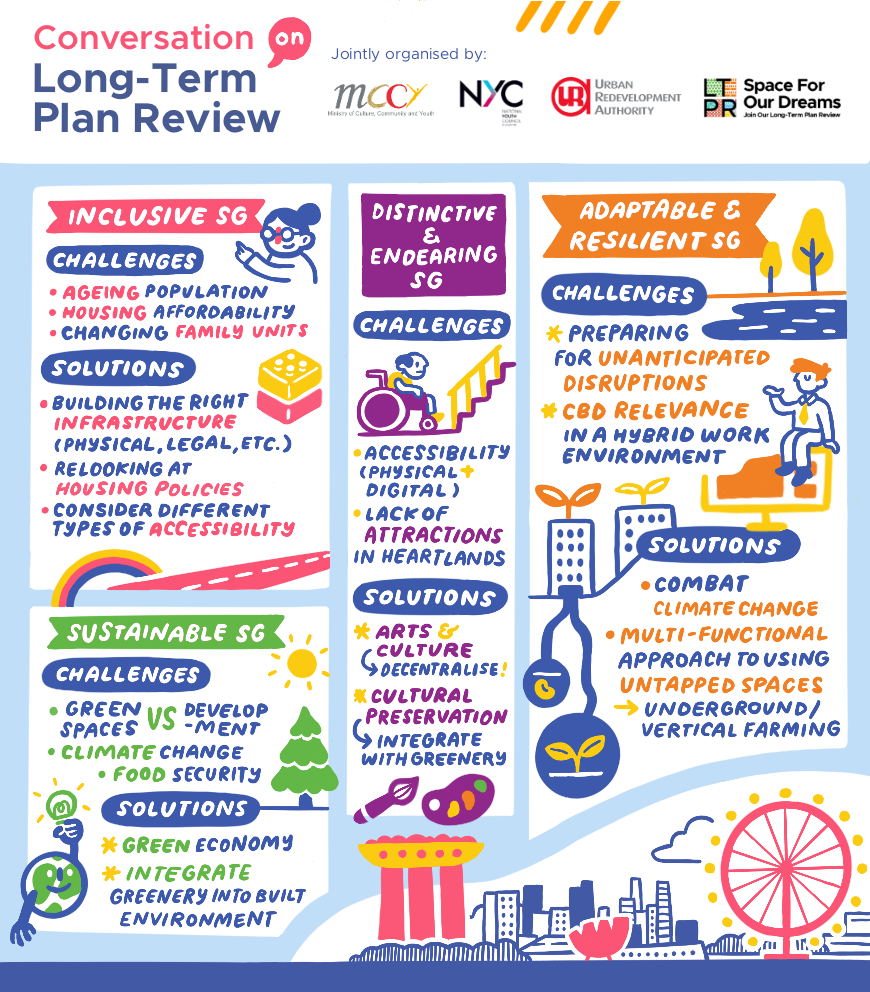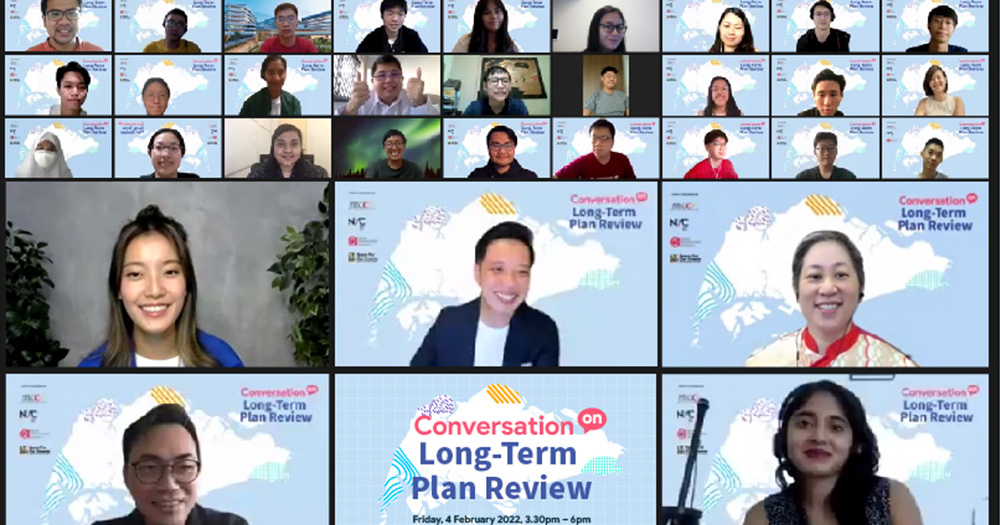What will Singapore look like over the next 50 years and beyond? That was the question that over 80 youths gathered to discuss in a National Youth Council and Urban Redevelopment Authority (URA) Long-Term Plan Review (LTPR) youth conversation.
Held over Zoom, the session saw participants engaging with each other and sharing their views on what URA has dubbed “the four key pillars” for Singapore’s future living environment: inclusive; sustainable; adaptable and resilient; and distinctive and endearing.
The pillars were conceptualised based on feedback gathered in other LTPR public engagements and emerging trends and disruptions that Singapore may face in the future.
In the virtual break out rooms categorised by the respective themes, young people discussed their thoughts on the LTPR, responding to prompts such as “what are some of the needs and challenges that Singapore may experience in the future?”.
The ensuing dialogue proved helpful in illuminating the concerns that youths of today have about their future and gave us a glimpse of how the leaders of tomorrow might want to shape our nation.
Building an inclusive Singapore
Housing arrangements were top of mind for some youths discussing what an inclusive living environment could look like in Singapore.
In particular, participants spoke about the nation’s public housing policy and if they could be tweaked to include further provisions for single Singaporeans.
One youth spoke of his desire to have a communal living arrangement, a departure from today’s common practice of living with your parents until you get married.
There was also a discussion about making sure that the design of our living spaces considers aspects of mental health, different physical capabilities, and the needs of the elderly.
 Image from National Youth Council
Image from National Youth Council
Building a sustainable Singapore
Population density was one issue youths voiced concern over when it came to Singapore’s development.
One youth described apprehension over the impact of continued population growth on society and the environment.
Participants also spoke on the limited space available on our island and the numerous competing land-use needs.
One suggestion to make the most of our resources was to look to the sea – building floating solar farms for energy generation.
Building an adaptable and resilient Singapore
When it came to forging a future city that was both adaptable and resilient, participants in the dialogue brought up the topic of food security and finding spaces in Singapore for farming.
Vertical farms were one suggestion, a feature that could possibly be integrated into the urban landscape — such projects are an efficient use of land resources while allowing Singapore to increase its ability to produce its own food, lowering dependence on international resources.
Another topic that sparked conversations was the adaptation and design of future community spaces and buildings for multiple purposes to fit a diverse range of needs.
Building a distinctive and endearing Singapore
Youths also care about preserving the island’s rich cultural heritage.
They said that unique aspects of Singapore, like our food and the diverse ethnicities, made our country distinctive.
When asked what facilities and spaces came to mind when thinking of an endearing and distinctive Singapore, participants responded by naming places such as the National Gallery, hawker centres, The Arts House, Geylang Serai and Marina Bay Sands.
It displayed a desire to have our future urban landscape looking modern, yet also maintaining visages of our history.
 Image from National Youth Council
Image from National Youth Council
What do I think?
So what about me? I was a (relatively) young person, in attendance at the LTPR Youth Conversation. What do I envision Singapore to look like 50 years down the road?
Can’t say that I have many concrete ideas, but somewhat whimsically, I hope that we’ll have a nation that makes space for each of its residents to pursue what they truly care about.
That might mean having more music venues so that burgeoning bands can put on live performances; sports facilities where young athletes can hone their skills; or districts rich in cultural history and cuisine — so the chefs of tomorrow can be inspired by the food of the past.
What’s most important for that to happen though, is that the leaders of today listen to the concerns of young people.
Thinking big and bold
The presence of URA’s Deputy Chief Executive and Chief Planner Hwang Yu-Ning at the session certainly gave me the impression that we were being heard.
Hwang joined the break out rooms, taking in the suggestions, and at times responding to comments in the chat.
Also in attendance at the session was Alvin Tan, Minister of State at the Ministry of Culture, Community and Youth, and the Ministry of Trade and Industry, who closed the session by encouraging the youths to continue thinking big when it came to Singapore’s future.
While acknowledging that some suggestions may be beyond what was possible for Singapore, Tan told the participants to persevere in thinking “ big and bold”.
“Explore the world and see how we compare to other cities, and understand what is preventing us from doing better,” he said.
“It’s exciting to realise that some of the plans we make now will become real in the next 50 years.”
More details about the conversation on Singapore’s Long-term Plan Review can be found here.
Writing this NYC-sponsored article made the writer think hard about what Singapore will look like 50 years down the road.
Top image via the National Youth Council
If you like what you read, follow us on Facebook, Instagram, Twitter and Telegram to get the latest updates.
